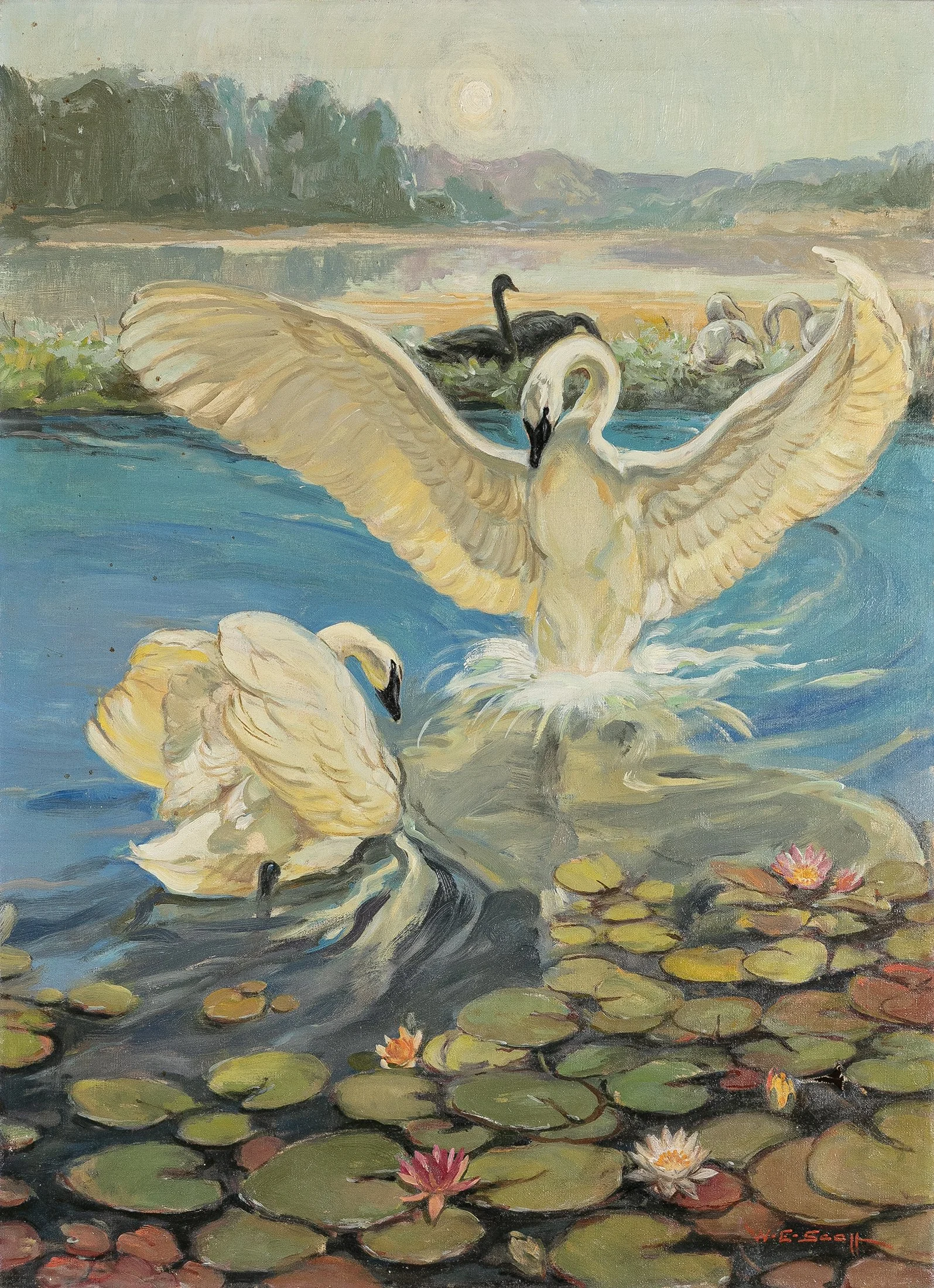
William Edouard
Scott
(1884-1964)
The Citadel, Haiti
c. 1930
oil on canvas
18-1/2 x 22 inches
signed
Exhibited: A Shared Heritage: Art by Four African Americans. Catalog accompanying the exhibition (originating at the Indianapolis Museum of Art), Harriet G. Warkel and William E. Taylor, p. 31, full page illustration.
Scott was born in Indianapolis, Indiana, to Caroline Russell and Edward Miles Scott, one of two children. His introduction to formal art training came at Manual High School in Indianapolis, where he studied with Otto Stark, a member of the Hoosier Group of artists. Encouraged by Stark, Scott went on to study at the Art Institute of Chicago, graduating in 1907 (although he continued classes for two additional years). As an upperclassman, Scott was awarded mural commissions at local schools and won the Magnus Brand Memorial Prize for three consecutive years. This financial success provided him with the means to travel abroad.
Scott made his way to Paris, where he met and spent time under the tutelage of Henry O. Tanner. Scott enrolled as a student at the Académie Julian. He had works accepted at the Salon de la Société des Artistes Français in Paris, becoming the second African American, after Tanner, to do so. His work in Europe focused on French genre scenes, especially peasant life. He was invited to exhibit at the Paris Salon in 1912 and 1913.
When he returned to the States, he applied the French academic tradition to genre scenes depicting southern African Americans. Scott also painted portraits of important African American figures Frederick Douglass, Booker T. Washington, and George Washington Carver, and illustrated several covers for The Crisis.
In 1927, Scott was awarded the Distinguished Achievement award from the Harmon Foundation, and four years later, he received the Julius Rosenwald Fellowship to study and paint in Port-au-Prince, Haiti. He spent over a year here and completed over 144 works depicting peasant life. After his return, he painted murals celebrating African American history and culture.
Throughout his career, Scott remained devoted to traditional, academic methods of painting and a realistic style. His work may be found in the collections of the Indianapolis Museum of Art; Du Sable Museum of African American History; New York Public Library; National Gallery of Art; Guggenheim Museum; Columbus Museum, GA; and Fisk University.
REF: A Shared Heritage, Art by Four African Americans, Indianapolis Museum of Art, Harriet Warkel and William Taylor, 1996.
Selected Exhibitions
Fifteenth Annual Exhibition of the Society of Western Artists, Art Institute of Chicago, IL, 1911
Negro in Art Week, exhibition of primitive African sculpture, modern paintings, sculpture, drawings, applied art, and books, Art Institute of Chicago, IL, 1927
WILLIAM EDOUARD SCOTT, Port-au-Prince (Haiti), 1932. Solo exhibition of paintings and drawings of Haitian subjects from Scott's stay in Haiti, 1931-32.
The Negro Artist Comes of Age: A National Survey of Contemporary American Artists, Albany Institute of History and Art, NY, 1945
Salute to the Barnett Aden Gallery, Murphy Fine Arts Center, Morgan State College, Baltimore, MD, 1968
Two Centuries of Black American Art, LACMA, 1976
Hidden Heritage: Afro-American Art, 1800-1950, Bellevue Art Museum, WA, 1985
The Flowering: African-American Artists and Friends in 1940s Chicago: A Look at the South Side Community Art Center, Illinois State Museum, 1993
The Great Migration: The Evolution of African American Art, 1790-1945, Taft Museum of Art, Cincinnati, OH, 2000
Between Generations: Paintings by WILLIAM EDOUARD SCOTT, Delta Arts Center, Winston-Salem, NC, 2002
A Century of Collecting: African American Art in the Art Institute of Chicago, Art Institute of Chicago, IL, 2003
untitled, Swans
c. 1940
oil on canvas
30 x 22 inches
signed